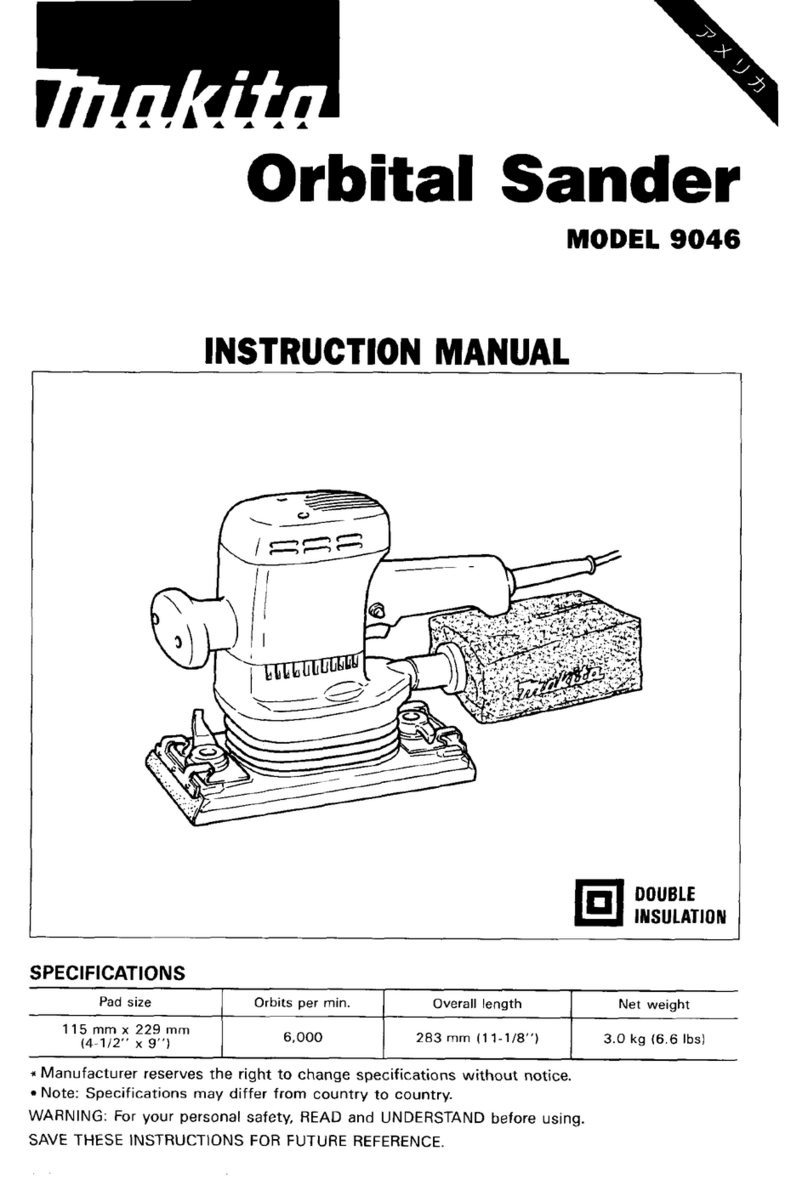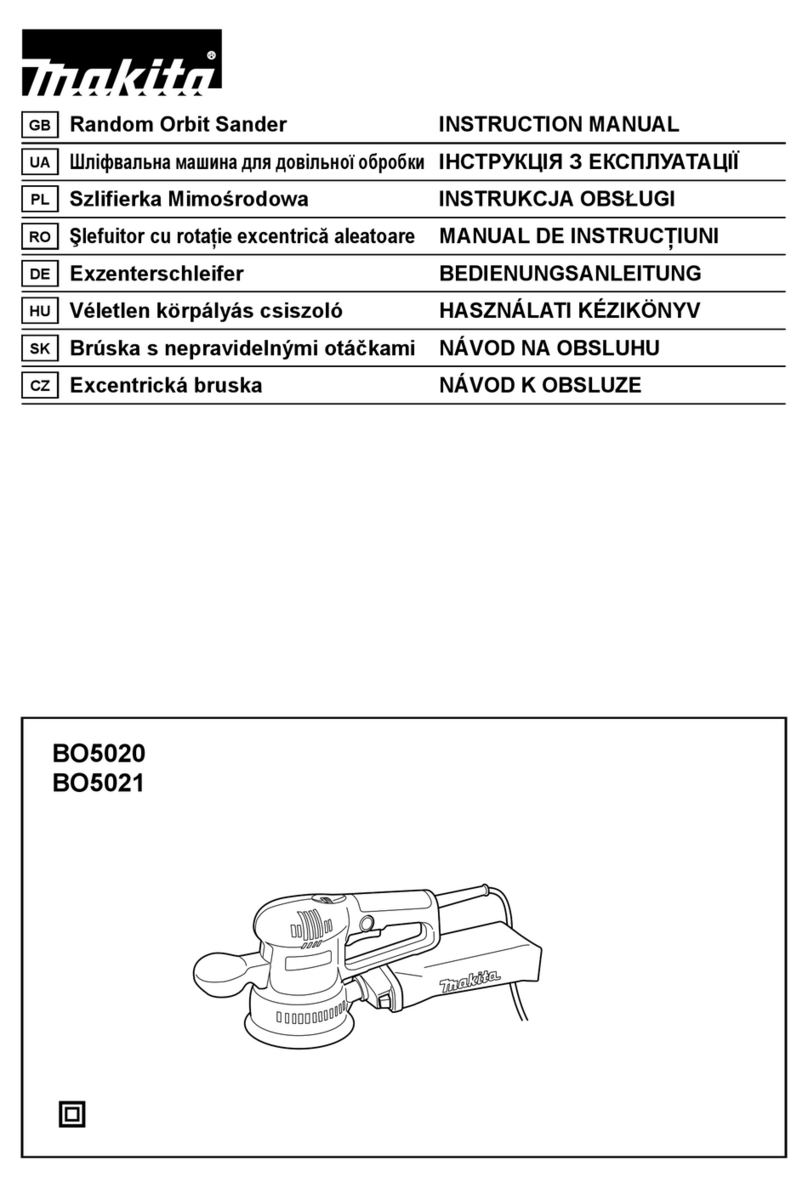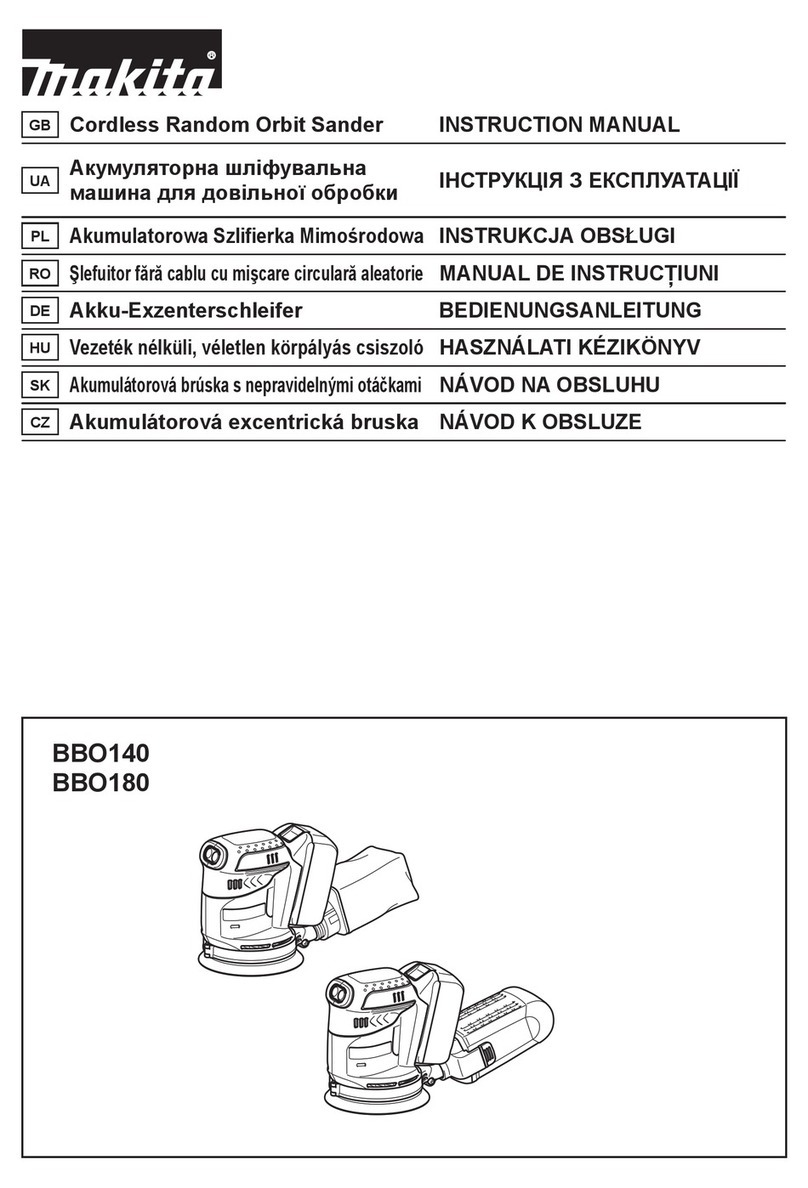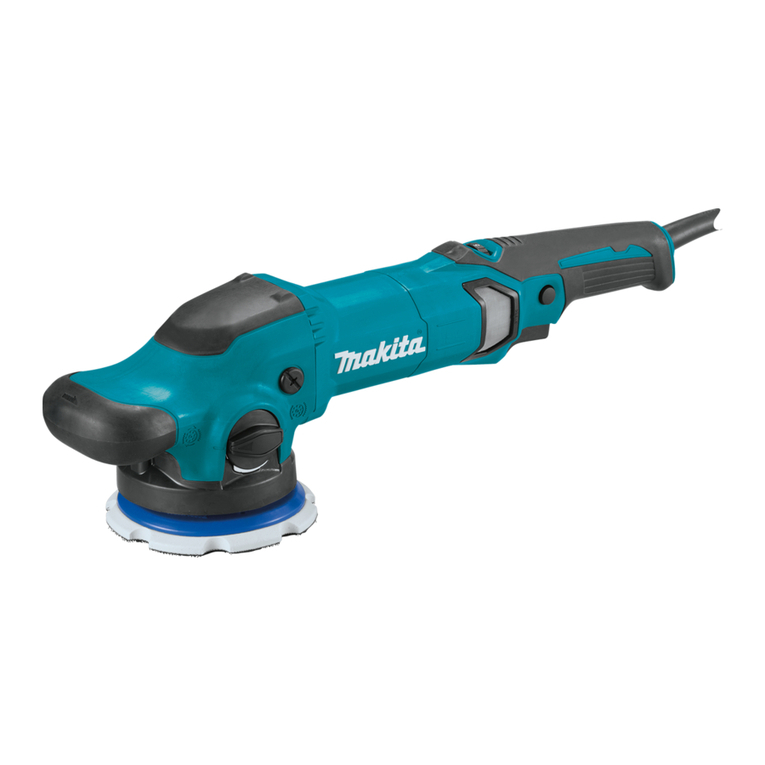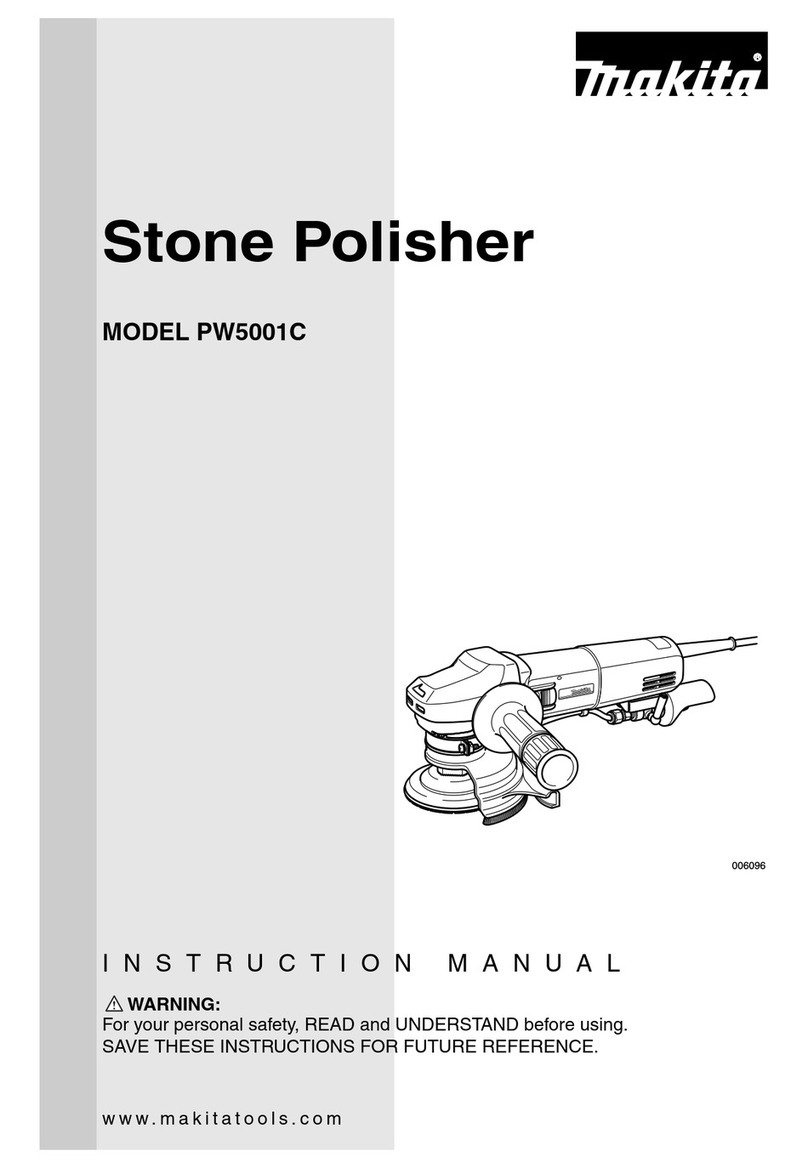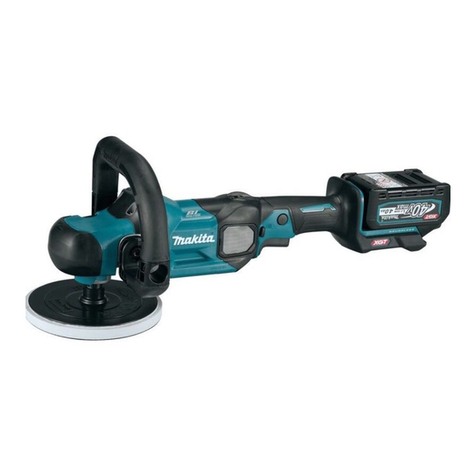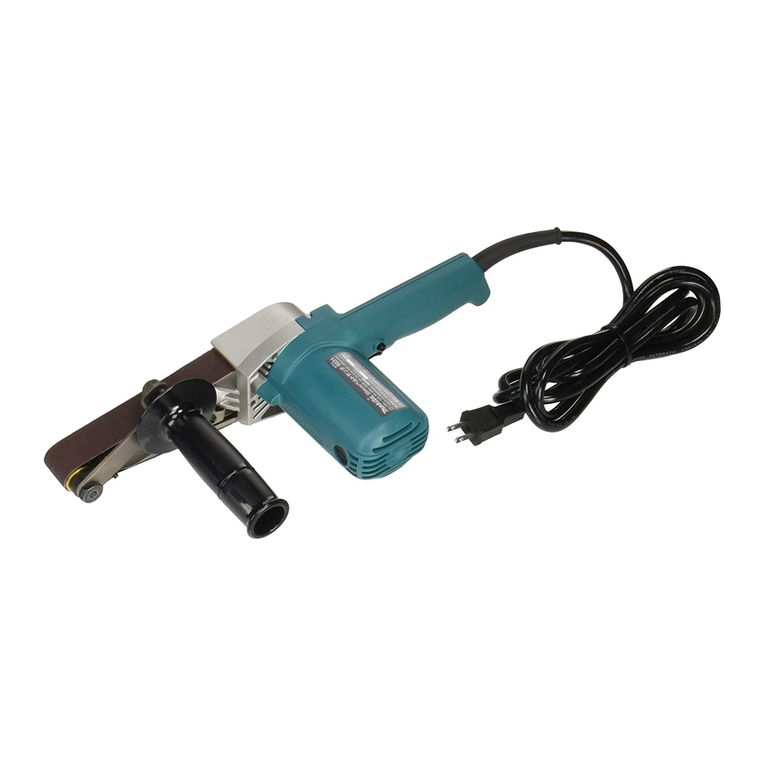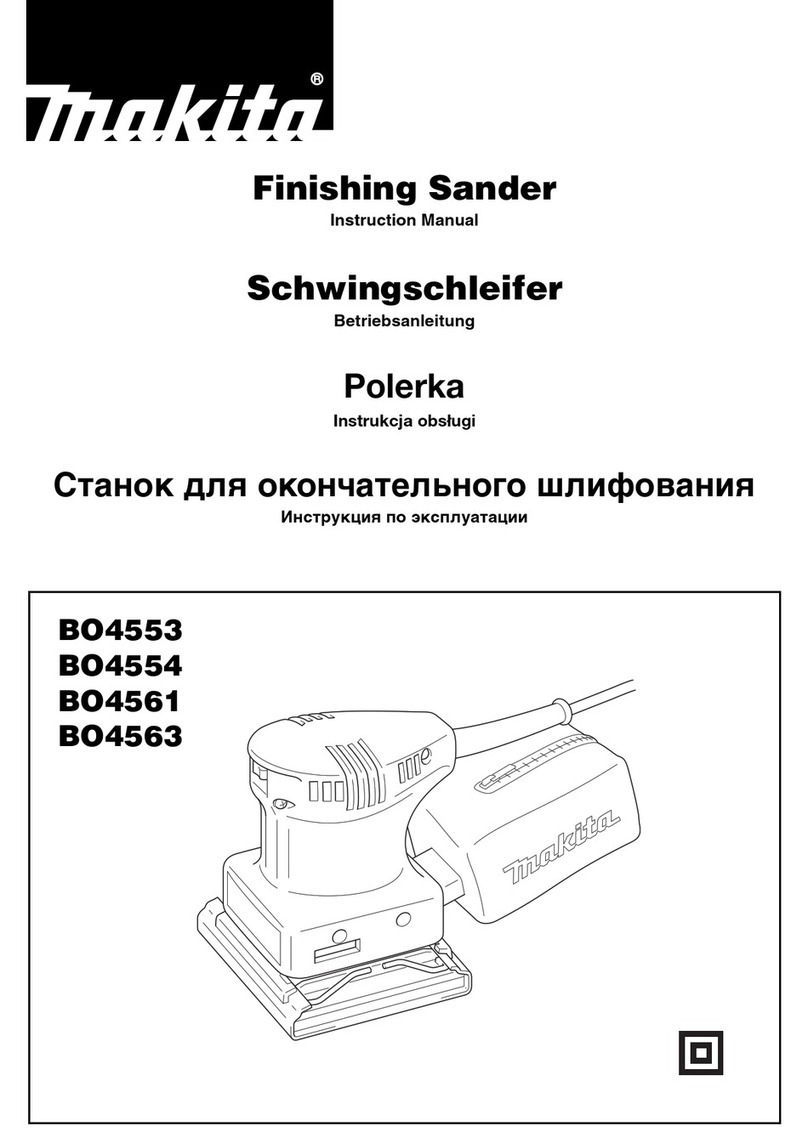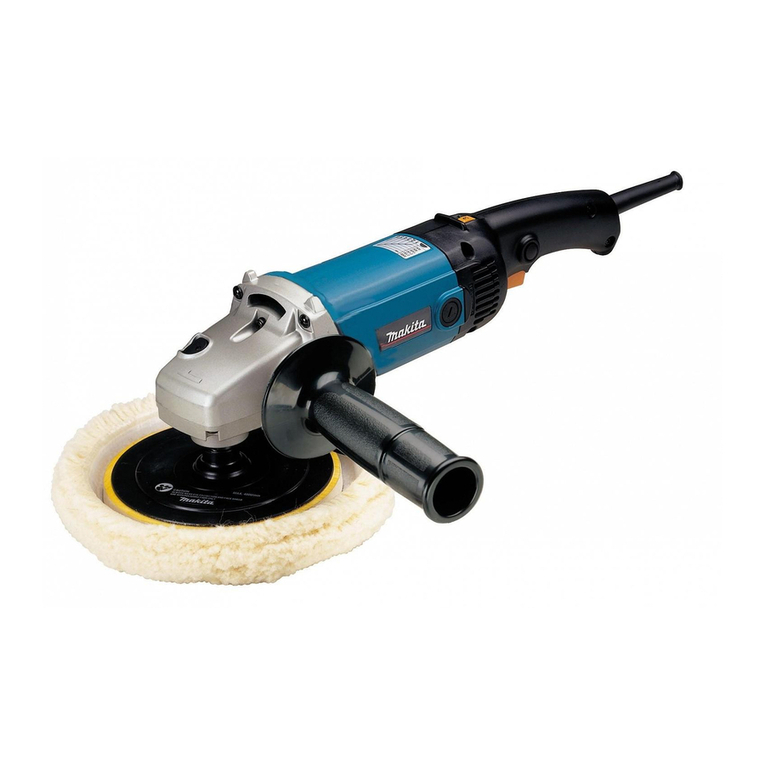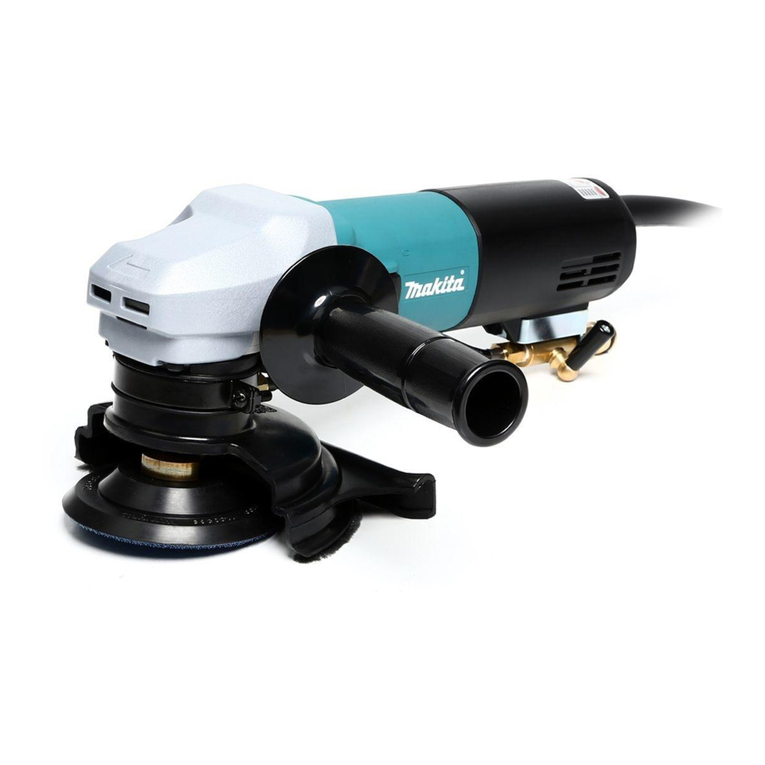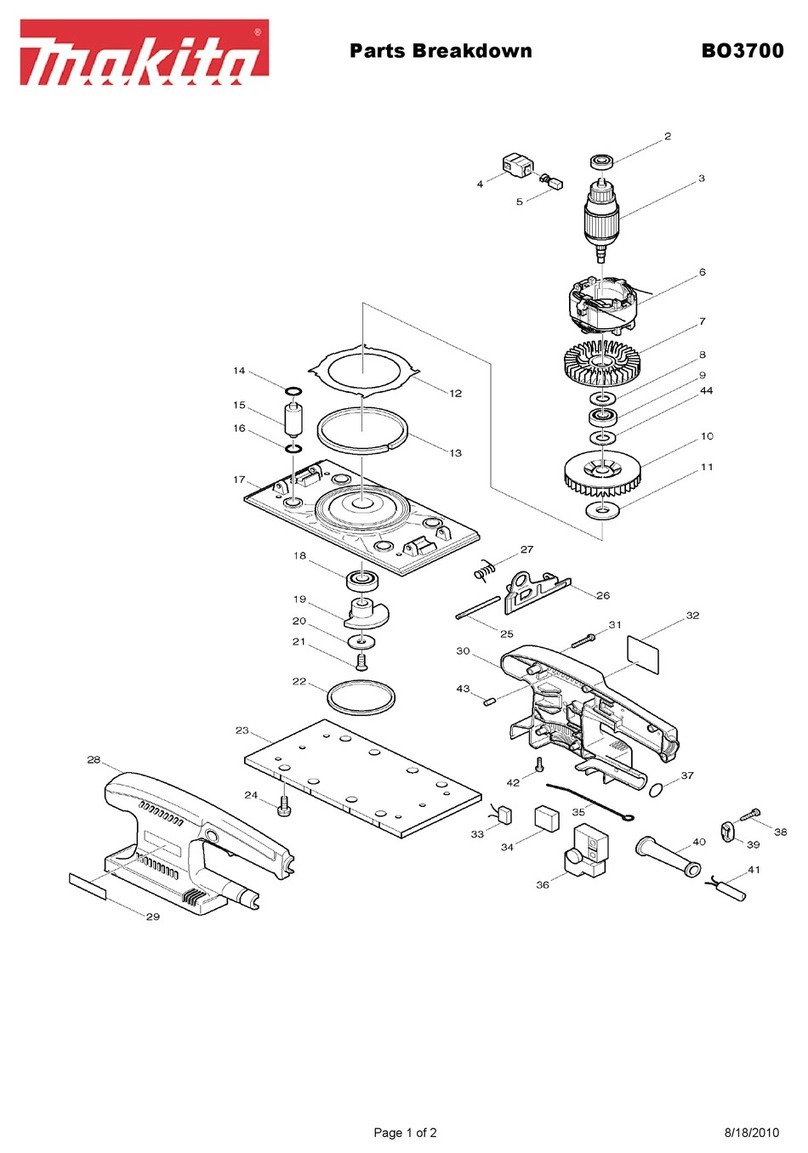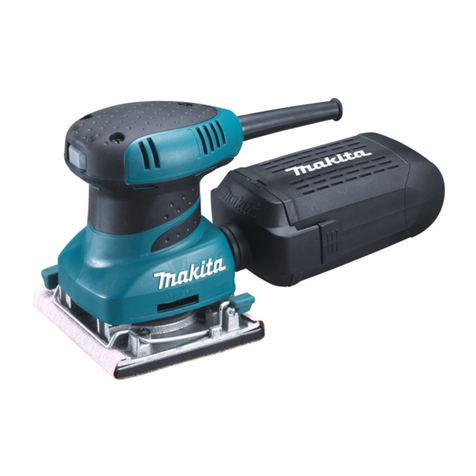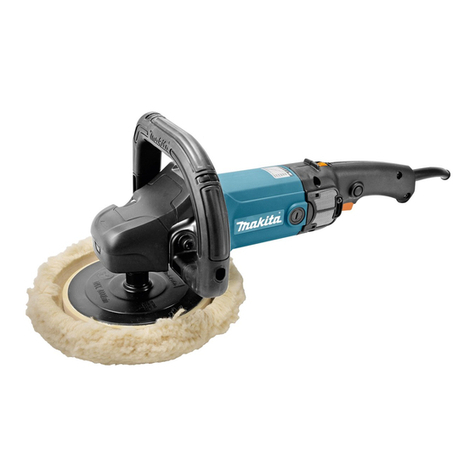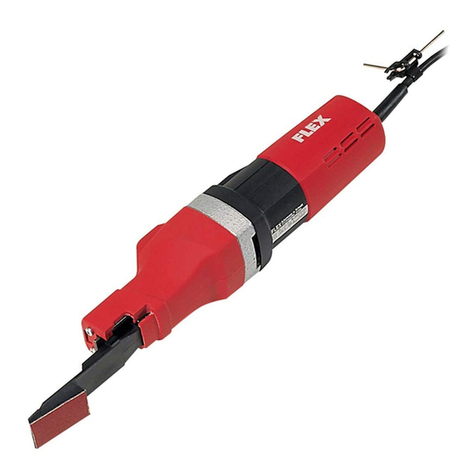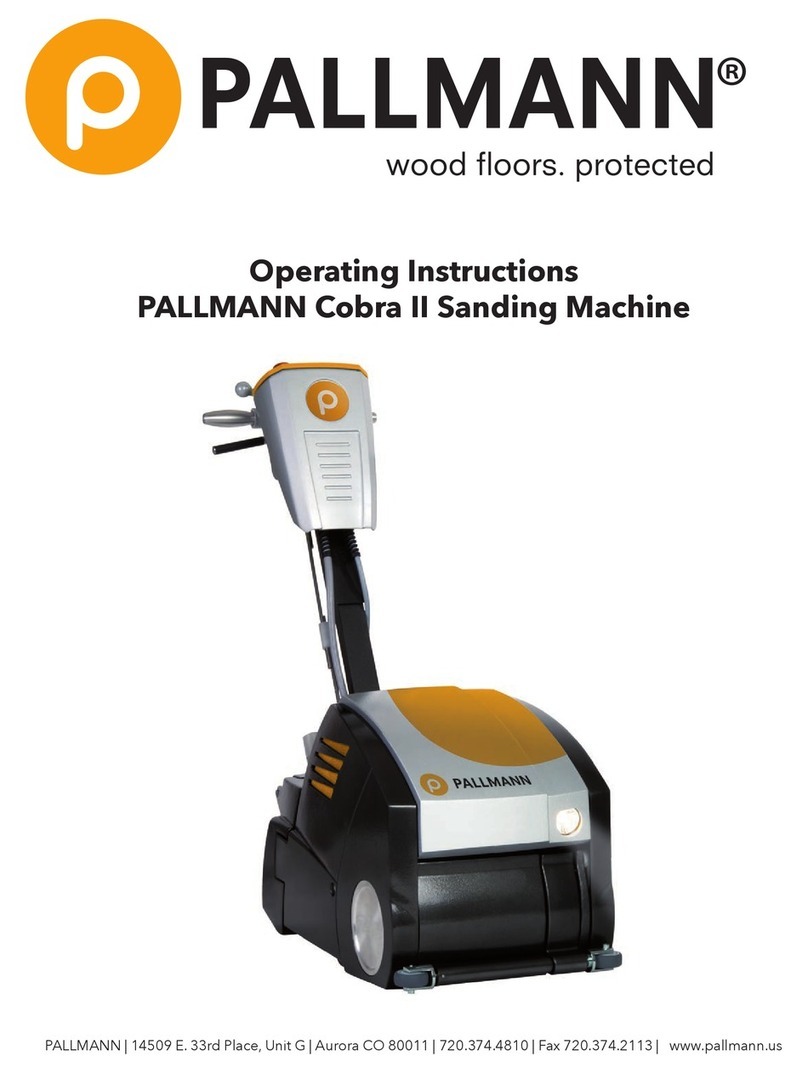17
Leegmaken van de stofzak
Schakel het gereedschap uit en trek de stekker uit het
stopcontact wanneer de stofzak ongeveer halfvol is.
Houd het gereedschap zoals afgebeeld in Fig. 3 en ver-
wijder de stofzak van de stofuitlaat door de drukknop in
te drukken zoals afgebeeld in Fig. 4. (Fig. 3 en 4)
Nadat de stofzak is leeggemaakt, steekt u de haak op de
stofuitlaat in het rechthoekig gat aan een van de zijden
van het stofzakfreem en dan duwt u het stofzakfreem
omhoog tot het in de drukknop vast komt te zitten.
(Fig. 5)
Installeren van de papieren stofzak
Om de papieren stofzak te installeren, plaatst u de papie-
ren stofzak met zijn bovenzijde naar boven gericht op de
stofzakhouder. Steek de onderrand van het bevestigings-
karton van de papieren stofzak in de groef van de stof-
zakhouder. (Fig. 6)
Druk daarna het bovenste gedeelte van het bevestigings-
karton in de richting van de pijltjes om het in de klauwen
vast te zetten. (Fig. 7)
Schuif de insnijding van de papieren stofzak op de gelei-
der van de stofzakhouder. Installeer daarna de stofzak-
houdermontage op het gereedschap. (Fig. 8 en 9)
Voorhandgreep (Fig. 10)
Monteer de voorhandgreep op het gereedschap door de
uitsteeksels op de voorhandgreep in de overeenkomstige
inkepingen op de voorkant van het gereedschap te pas-
sen. Zet de voorhandgreep vast door de schroef door de
opening in de voorhandgreep met een schroevendraaier
vast te draaien.
Verwisselen van de steunschijf (Fig. 11)
Makita biedt een uitgebreide keuze van los verkrijgbare
superzachte steunschijven en standaarduitgeruste
zachte steunschijven. Draai de schroef linksom los vanaf
het midden van de gereedschapsvoet door met een
hamer stevig te tikken op de zeskantsleutel. Nadat de
steunschijf is verwisseld, draait u de schroef goed vast
naar rechts.
Werking van de schakelaar (Fig. 12)
LET OP:
Alvorens de stekker van het gereedschap op een stop-
contact aan te sluiten, moet u altijd controleren of de
trekschakelaar behoorlijk werkt en bij loslaten naar de
“OFF” positie terugkeert.
Om het gereedschap te starten, drukt u gewoon de trek-
schakelaar in. Laat de trekschakelaar los om te stoppen.
Voor continuë werking, de trekschakelaar indrukken en
dan de vergrendelknop indrukken. Om het gereedschap
vanuit deze vergrendelde stand te stoppen, drukt u de
trekschakelaar volledig in en dan laat u hem los.
Snelheidsregelknop (Fig. 12)
Het toerental van het gereedschap kan worden afgesteld
op een willekeurig toerental tussen 4 000 rpm en
10 000 rpm. Draai hiervoor de regelknop die gemarkeerd
is van 1 tot 5. Het toerental verhoogt wanneer de regel-
knop verder naar het cijfer 5 wordt gedraaid, en verlaagt
wanneer deze terug naar het cijfer 1 wordt gedraaid. Zie
de onderstaande grafiek voor de verhouding tussen de
cijfers op de regelknop en het soort werk.
A bereik: Voor polijsten
B bereik: Voor afwerken (fijnschuren)
C bereik: Voor normaal schuren
OPMERKING:
De bovenstaande grafiek toont de snelheidsbereiken
voor standaard werkzaamheden. Deze kunnen echter
verschillen afhankelijk van de condities.
Schuren (Fig. 13)
LET OP:
• Schakel het gereedschap nooit in terwijl de schijf in
aanraking is met het werkstukoppervlak, aangezien de
gebruiker daardoor verwondingen kan oplopen.
• Schuur nooit met het gereedschap zonder dat de
schuurschijf is aangebracht. Als u dit doet, kan de
steunschijf ernstig beschadigd raken.
• Forceer nooit het gereedschap. Overmatige druk kan
leiden tot slechtere schuurprestaties, beschadiging van
de schuurschijf en een kortere levensduur van het
gereedschap.
Schakel het gereedschap in en wacht totdat het met volle
snelheid draait. Plaats daarna het gereedschap lang-
zaam op het werkstukoppervlak. Houd de gereedschaps-
voet vlak met het werkstuk en oefen lichte druk uit op het
gereedschap.
Polijsten
LET OP:
• Gebruik uitsluitend een originele Makita sponsrubbe-
ren, vilten of wollen schijf (los verkrijgbare accessoi-
res).
• Gebruik het gereedschap altijd bij een lage snelheid
om beschadiging/verbranding van het werkstukopper-
vlak te voorkomen.
• Forceer nooit het gereedschap. Overmatige druk kan
leiden tot slechtere polijstprestaties, overbelasting van
de motor en eventueel defect van het gereedschap.
1. Was aanbrengen (Fig. 14)
Gebruik een los verkrijgbare sponsrubberen schijf.
Breng was aan op de schijf of op het werkoppervlak.
Laat het gereedschap draaien om de was glad te
strijken.
OPMERKING:
Was eerst een onopvallend gedeelte van het werk-
stukoppervlak om er zeker van te zijn dat het
gereedschap geen krassen maakt in het oppervlak
en dat de was niet ongelijkmatig wordt uitgestreken.
Omwentelingen per minuut
Instelling van de regelknop
C bereik
B bereik
A bereik
